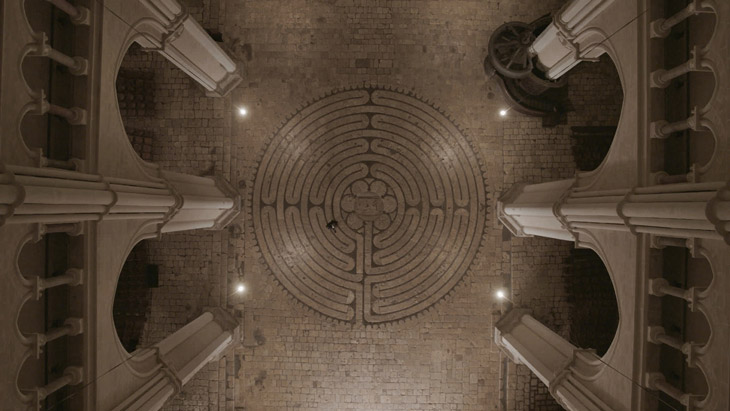Why makes Chartres cathedral unique?
« House of Mary on Earth »
It is a grand sanctuary to Mary. Many cathedrals are consecrated as ‘Our Lady.’ In the mind of the builders, Chartres is her « mansion », her « special space »: she is here, at her house – where her Holy Veil is kept. Many take a pilgrimage to this church, traveling by foot from Paris or elsewhere. There are many important places for prayer inside the cathedral, continuing this long tradition – keeping it alive.

Notre-Dame du Pilier, Chartres Cathedral © NDC, A. Delauney
Those who know the cathedral well know that it has all the grace of Mary: it is feminine, introspective, welcoming, soothing…
A triple masterpiece
It is a triple masterpiece of architecture, stained glass, and sculpture. Which is given to us almost ‘as is’ by the XIIth-XIIIth centuries.
Tour guides from around the world rate this site with three stars, the maximum possible.
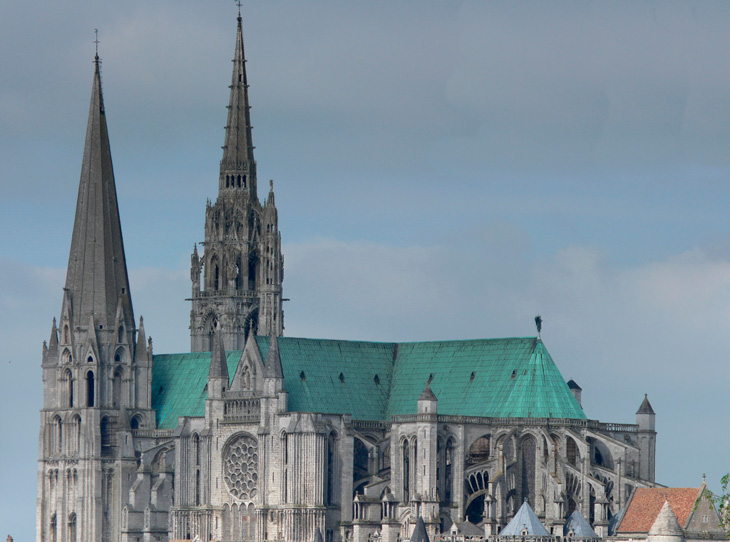
Chartres Cathedral © NDC, H. de Féraudy
Architecture preserved at almost 100%…
The Architecture is conserved almost 100%. The façade (ca. 1150) the nave, the choir and the transept (ca. 1200-1220, also with the side aisles and the ambulatory): all of these parts date entirely back to the Middle Ages.
The cathedrale of Chartres has not been reconstructed, but a very low number of stones have been replaced during restoration. The material is local to the region (Berchères) withstands the weather very well. Therefore, the blocks that you see are the original ones placed by masons 800 years ago.
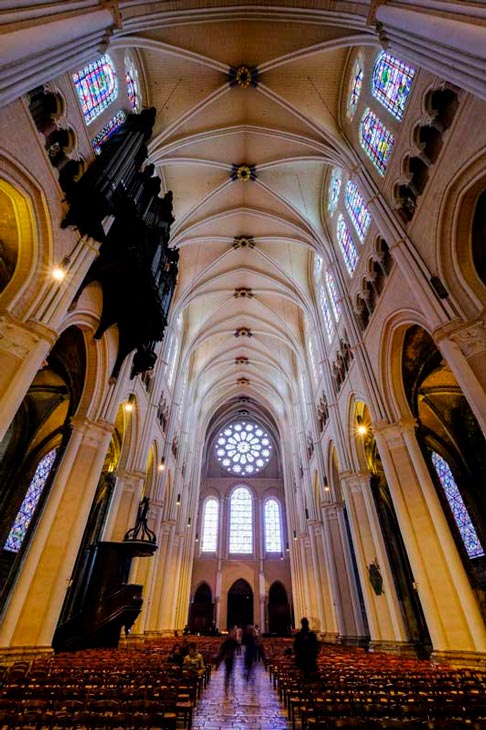
© NDC, S. Godts
Original stained glass at almost 80%
The Stained Glass Windows are 80% original – those found at Chartres cathedral make up the largest collection of Medieval stained glass in the world.
Everywhere else, the glass windows – fragile by definition – have not always survived through the eras. Almost all of the glass at Chartres survived the 100 Years War, religious wars, changes of taste, the French Revolution, bad restoration practices, and both World Wars…

Stained glass Saint-Lubin © NDC, fonds Gaud
The collection of stained glass at Chartres Cathedral is similar to « Elsewhere, there are books with pages torn out, but here, almost all are still bound. »
Better yet, since most are still present (and cleaned), you can discover the ambiance of the original luminosity.
Sculptures preserved at more than 90%
More than 90% of the Sculptures have been conserved. None of the heads are missing or reconstructed. At Chartres, you can follow the emergence of sculptural style that characterizes the Gothic era.
At the royal portal, (XIIth century), the caryatid statues are a must-see: their proportions are elongated, an enigmatic look, yet they still evoke the previous Romanesque style. At the grand portals (north and south XIIIth century), the statues, while still solemn, ‘come to life.’ In the choir screen (XVIth century), you can feel all the emotions of the characters.

North Portal: Solomon, Queen of Sheba, Balaam © NDC
Same murals as originally
The original painted murals… Since the restoration of the interior (begun in 2008), the walls have been taken back to how they would have appeared in the XIIIth century: covered with an ochre beige with drawn les ‘faux joints’ to mimic stone with white pillars.

Triforium, Chartres Cathedral © NDC
The decorative paint, made to create a resemblance to a ‘celestial Jerusalem’ is very rarely conserved in gothic cathedrals. Here, visitors have the impression that it was ‘restored’ at some point, but in reality, it has simply been cleaned.
Built in a very short period of time
The cathedral of Chartres was constructed very quickly (around 25 years including the statues and the canopies) – which resulted in a uniform style. There have also been more recent additions (the ‘choir screen,’ the Goudji designed altar), art historians know that this cathedral is a great tool for teaching Gothic art. Without a doubt, the cathedral is an example of what builders aspired to create in 1194.
This is also the reason that many university researchers from all over the world could spend hours at Chartres.
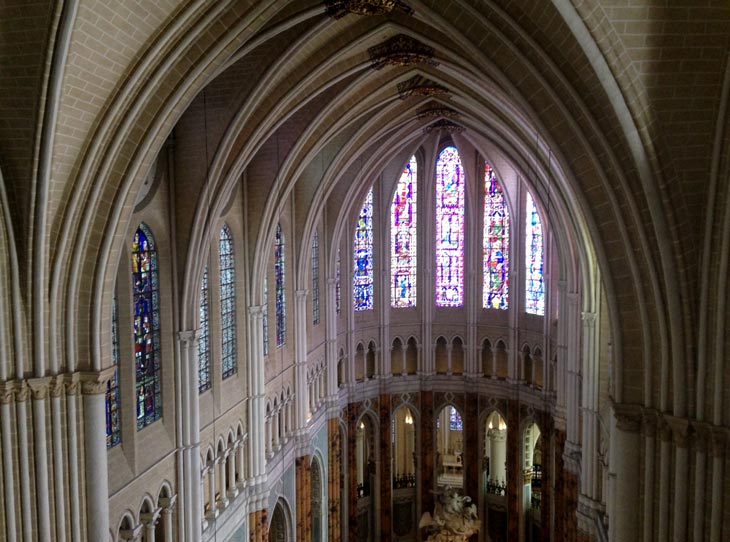
© NDC
It focuses the attention of artists
The cathedral captures the attention of many artists. Many philosophers, writers, poets, artists, musicians, architects (from all over the world) came to Chartres and have been struck by the grand impression of the cathedral’s sanctuary. Each were inspired by the cathedral’s magnificence and translated their impressions into their professional medium : architects who built city buildings, masterpieces in music…
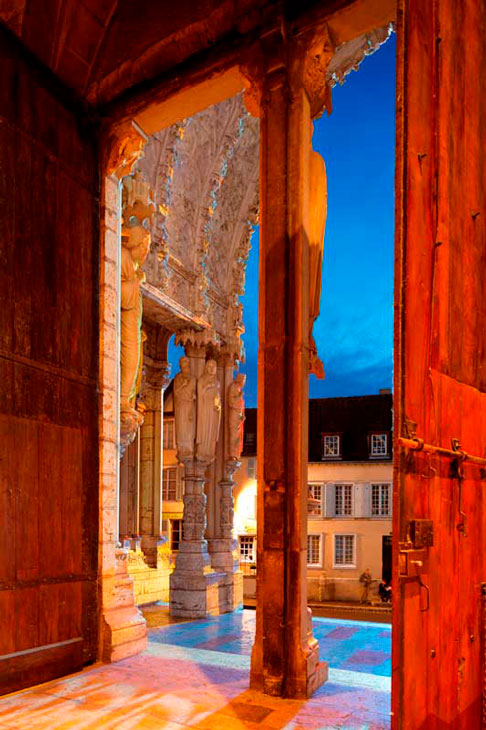
North Porch © NDC, H. de Féraudy
Therefore, the impact of inspiration found at Chartres is implicit in many contemporary works of art. However, Perhaps you too will have an unforgettable experience in awe of the volume of space in the nave, the emotion that rests on the faces of the statues or the sensation of colors in the stained glass… We often say that there is an aesthetic shock turned spiritual feeling here…
Built on the largest crypt in France
The cathedral is constructed above a crypt, which is the largest in France. For those who like to go ‘underground,’ it is well worth it here. The evolution of architectural styles is present from here up: pre-Romanesque, Carolingian, Gallo-Roman… The crypt is also a special place for prayer, and mass is celebrated in all languages by many ethnic groups (European, American, African, Asian, and others…).

Baptistery of the crypt © NDC
A labyrinth, the only one preserved from the 13th century
In the center of the nave, there is a labyrinth, the only one preserved from the 13th century. This geometric design was created by using contrasting light and dark stone. It is the a sacred symbol and tool that has encouraged meditation since its construction: it is representative of human life, with all its complexities, but always heading towards an ultimate goal… At Chartres, many choose to meditate along the labyrinth, which is available to do so on Fridays February-October.
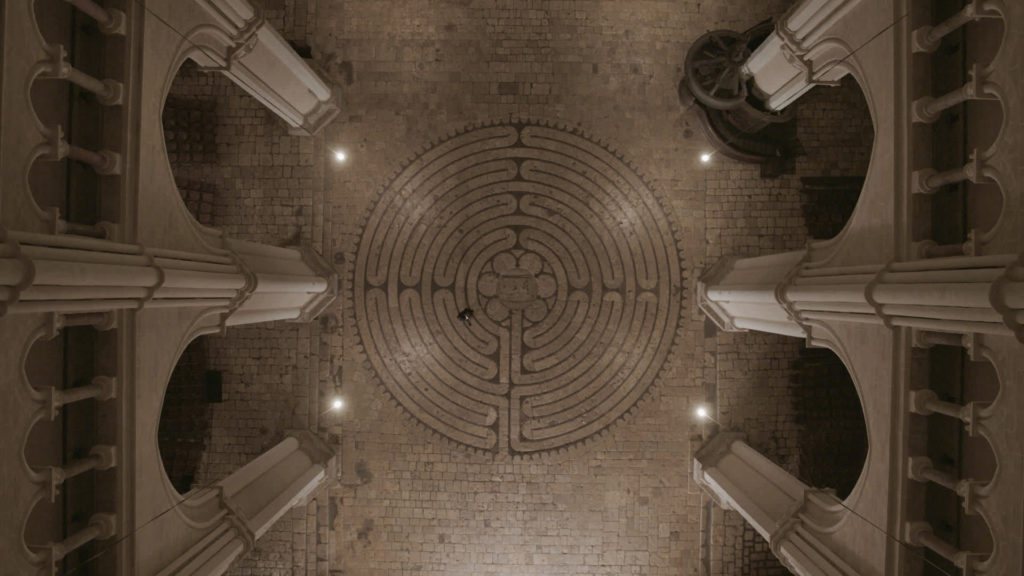
The labyrinth
Find all the photos on this page in a clickable version:


